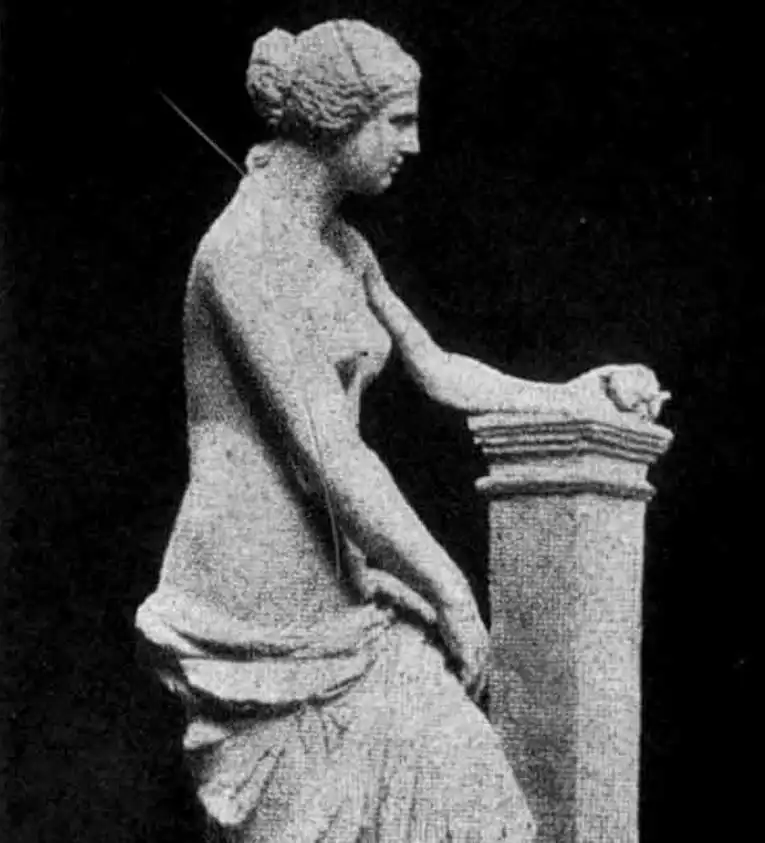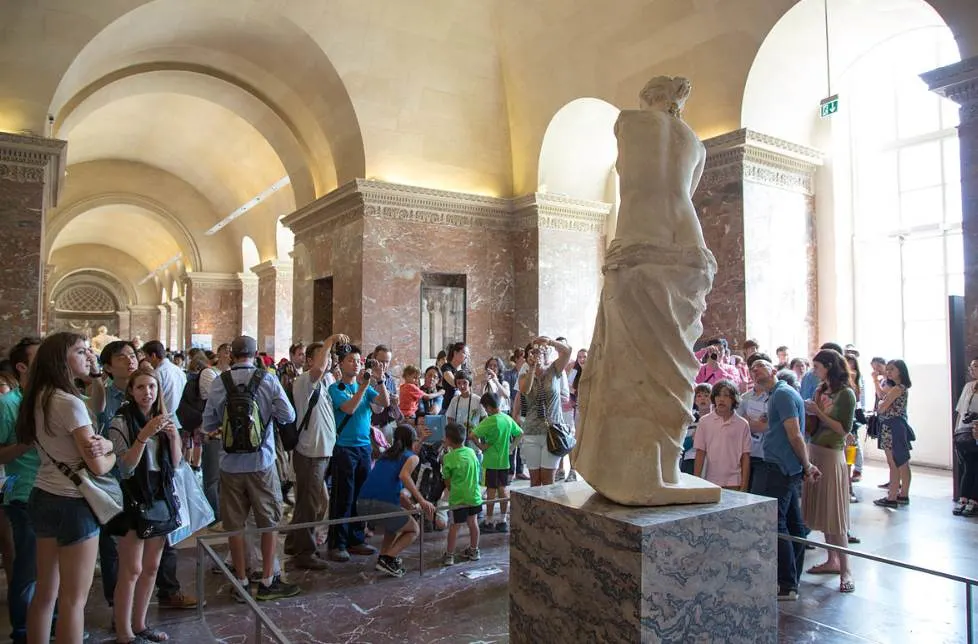There aren’t that many intact ancient Greek sculptures, and one of the most famous ones is missing a couple of features as well.
Historians classify ancient Greek sculpture into 3 different periods, Archaic (650 to 480 B.C.), Classical (480–323 B.C.), and Hellenistic (323-30 B.C.). The best-known sculptures date back to this Hellenistic period, including this one.
Let’s take a closer look at some of the most interesting facts about the Venus de Milo sculpture, an iconic ancient Greek work of art.
1. It was produced somewhere between 150 and 125 B.C.
The Venus de Milo is an ancient Greek sculpture produced during the Hellenistic period. This period began with the death of Alexander the Great in 323 B.C. and ended with the Roman conquest of the Greek world in 30 B.C.
The sculpture was originally thought to have been carved by an Athenian sculptor named Praxiteles, a man who lived in the 4th century B.C.
The real period in which it was created has been dated to the 2nd century B.C. between 150 and 125 B.C. The sculptor was a man named Alexandros of Antioch. We know because he inscribed his name on the plinth of the work.

2. It depicts the ancient Greek goddess of love and beauty
The Venus de Milo is one of the most famous sculptures in the world. It depicts the goddess Venus, the Roman counterpart of the ancient Greek goddess Aphrodite.
It’s therefore also sometimes referred to as the “Aphrodite de Milo,” a reference to the ancient Greek goddess of love, desire, and beauty.
Although it’s generally agreed that it depicts this ancient Greek goddess, the true identity has been questioned. It might also depict the sea-goddess Amphitrite, the wife of Poseidon and the symbol of the sea in the ancient Greek world.
3. The name of the sculpture refers to the location it was discovered

The sculpture’s name is the French version of the title “Venus of Milos.” This is a reference to the Greek island of Milos where it was discovered.
This volcanic island is situated in the Aegean Sea, approximately between the island of Crete to the south and Athens to the north. It’s very hilly with one peak that reaches an elevation of 748 meters (2,454 feet) above sea level.
It’s not the smallest of the Greek islands with dimensions of 23 kilometers (14 miles) from east to west, 13 kilometers (8.1 miles) from north to south, and covering a total area of 151 square kilometers (58 square miles).
The island became part of the Roman Republic in 197 B.C. which means that the sculpture was produced during Roman times. The sculpture was discovered in the modern-day town of Trypiti which is right next to the ancient catacombs and Roman Amphitheater.

4. The true identity of the discoverer has been mixed up
The sculpture was discovered on April 8, 1820, a period in history in which the Greek island of Milos was still part of the Ottoman Empire. This changed shortly after the conclusion of the Greek War of Independence.
There are two theories as to who discovered the remarkable Venus sculpture. Either it was a peasant named Yorgos Kentrotas or a man named Yorgos Bottonis and his son Antonio.
The latter theory seems more credible because there was a letter from the French consul in Milos named Louis Brest who mentioned that Kendrotas found the sculpture in a cavity with the size of 1.2 × 1.5 meters (3 feet 11 inches × 4 feet 11 inches) on a piece of land he owned.
5. It’s probable that it wasn’t in one piece upon its discovery
The exact state of the sculpture the moment it was discovered remains hazy. It’s generally agreed that it wasn’t in one piece at the time and that the upper torso and the drapery and legs were separated from each other.
The arms of the statue were already missing but the left arm appears to have been longer than it is today.
Only drawings exist of how it was discovered and various parts have gone missing since its discovery. This includes the inscribed plinth on which it stood, part of the left arm which held an apple, and the left foot which was still intact in 1820.
German archaeologist Adolf Furtwängler proposed how the sculpture might have looked based on the drawings made shortly after it was discovered.

6. The sculpture is world-famous for a particular reason
One of the most interesting facts about Venus de Milo is that it didn’t become world-famous in the sense it is today because of its incredible artistic value, despite being an amazing work of art.
The main reason why it became so famous is that it was acquired by the French state which had recently lost numerous priceless works of art. These include several ancient Roman and Greek sculptures that were first looted by Napoleon and returned after his fall.
Some of the most notable works are Laocoon and His Sons, now at the Vatican Museums, and the Venus de Medici, now at the Uffizi Gallery in Florence.
Because of these losses, France launched a propaganda campaign to promote Venus de Milo, a marketing effort that worked. They even went as far as hiding the plinth so it could be promoted as a work produced during the classical era.
7. It has been a great inspiration for several modern artists
The sculpture has served as the inspiration for several modern artists, including Paul Cézanne (1839-1906) and René Magritte (1898-1967).
It was reused multiple times by the Spanish artist Salvador Dalí (1904-1989), one of the leading Surrealist artists of his time.
Some of his most notable paintings involving the Venus sculpture are “Venus de Milo with Drawers” (1936) and “The Hallucinogenic Toreador” (1969–70).
Both these paintings are on display at The Dalí Museum in St. Petersburg, Florida.

8. The sculpture has been featured in numerous forms of media
The propaganda campaign of the French exceeded even their expectations because just about everybody has come across the iconic sculpture. That’s because it has been reused in a wide variety of media, including magazines, advertisements, and even home decoration.
The most prominent features were in tv-shows and movies. The most popular representations are comedy gigs in which people break off the sculpture’s arms by accident.
9. How big is the Venus de Milo?
The large sculpture was carved from a block of Parian marble, a fine-grained and pure white type of marble quarried on the Greek island of Paros. This island is also situated in the Aegean Sea not too far northeast of Milos.
The sculpture is just over life-size and stands 204 centimeters (6 feet 8 inches) tall.

10. Where is the sculpture located today?
The Venus de Milo has been one of the most famous sculptures at the Louvre museum ever since it entered its collection in the year 1821.
It still has a room designated for it in the Louvre Museum in Paris, the most popular museum in the world, and still draws a massive crowd to it every single day.

